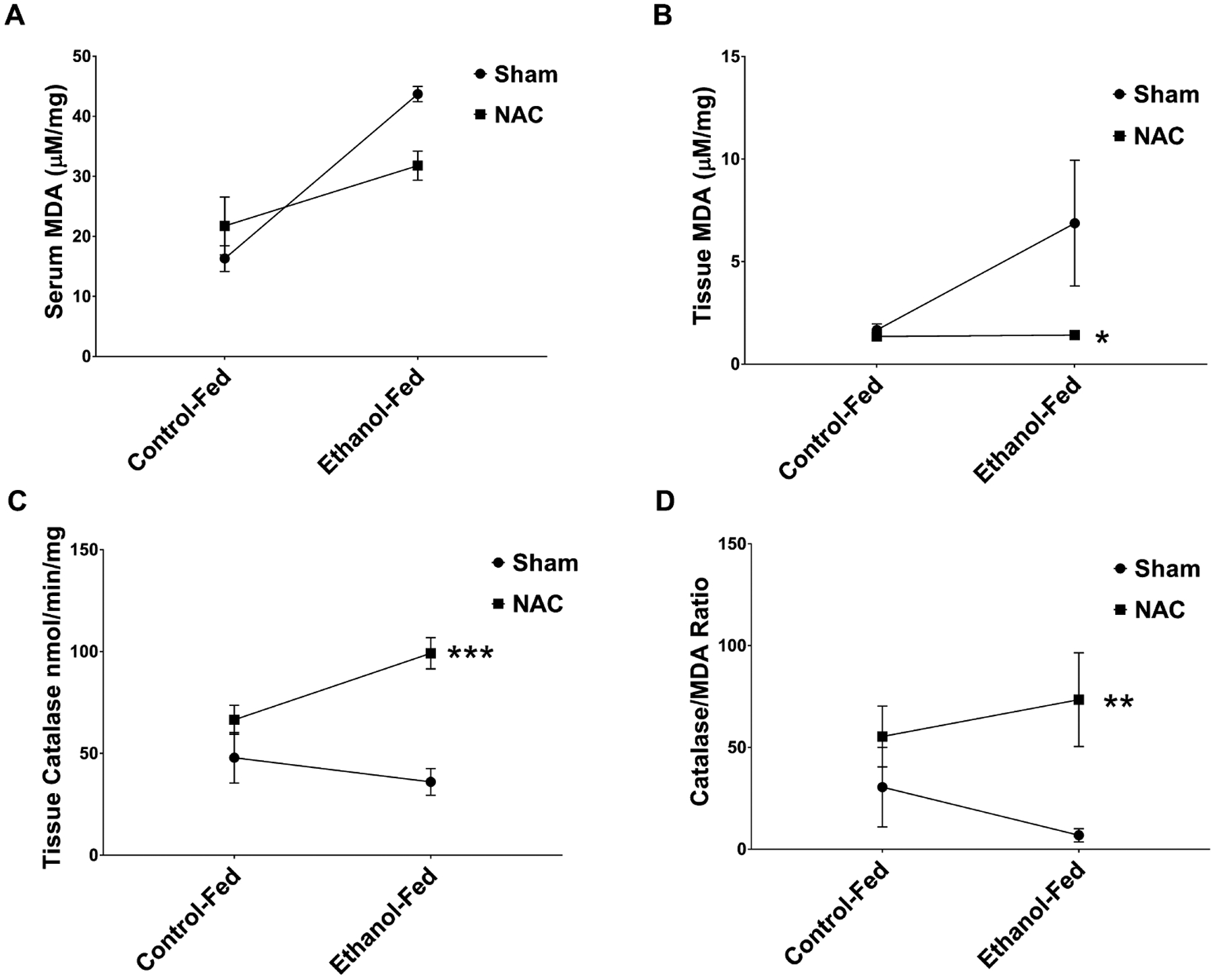Fig. 3.

Oxidative stress markers in ethanol (EtOH)-fed rats following fracture and treatment with n-acetyl cysteine (NAC). (A) Serum MDA levels in control-fed, control-fed NAC-treated, EtOH-fed, and EtOH-fed NAC-treated rats. Mean serum MDA levels in the EtOH-fed animals were significantly (p = 0.002) higher than in controls. NAC treatment decreased MDA levels (NS), but there was a significant (p = 0.033) interaction. (B) Tissue callus homogenate MDA levels. EtOH increased MDA levels 4-fold over controls (p = 0.05) and NAC treatment restored it to control levels (*p < 0.04). No significant interaction was observed. (C) Tissue callus homogenate catalase levels. EtOH slightly decreased catalase activity compared to controls. NAC treatment of EtOH-fed rats increased it almost 3-fold (***p < 0.001) compared to the level in untreated EtOH-fed rats, with a significant (**p < 0.001) interaction with diet. (D) The efficacy of NAC demonstrated by determining the ratio of catalase to MDA, which is an index of antioxidant efficacy. Catalase/MDA ratio was significantly decreased in the EtOH-treated animals. This ratio was significantly (**p < 0.002) restored higher than control levels with NAC injection. N = 4 animals per group.
